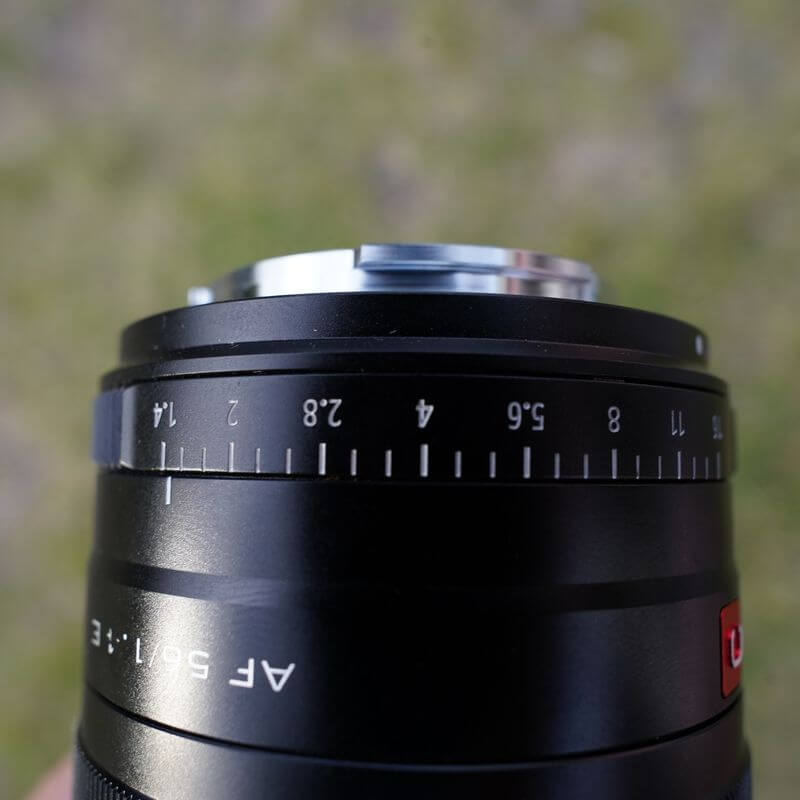Viltrox 56mm f/1.4 STM review
Last update: 04/19/2024
Our blog continues to grow thanks to you, our readers. This blog may contain affiliate links, which means we can earn a small commission if you make a purchase through them, at no extra cost to you. This helps us to continue to bring you more and support our work!
If you have been following us for some time now on our blog, you must know that we are writing more and more about camera equipment. Today we are going to talk about the Viltrox 56mm f/1.4 STM for Sony E. We have already started reviewing several lenses with Alex (in collaboration), but they were exclusively our own lenses. First, I’ve tested my wide-angle lens, the Tamron 20mm f/2.8 Di III OSD M1:2, and then we went on to review two other wide-angle lenses for a full frame camera: the Tamron 24mm f/2.8 Di III OSD M1:2 and the excellent Sony FE 20mm f/1.8 G.
There on, we have compiled on one page all the lenses for Sony full frame cameras (FE), and on another the ones dedicated to Sony APS-C cameras.
This article is a first, as it is our first partnership with a lens brand: Viltrox. They agreed to send us this Viltrox 56mm f/1.4 STM to review it and give our honest opinion. As I always say, our opinions and writings remain our own and we keep being independent in what we write.
All the pictures you will see in this article were shot with our Sony A6000, which we recently bought as a second camera, but also with our Sony A7III. Indeed, even if it is a lens dedicated to Sony APS-C cameras, we also tested it on a full frame sensor to see how it reacted.
All pictures were processed with Dxo Photolab 5 software, with standard color rendering. The software does not yet offer a correction profile for this Viltrox 56mm. Unfortunately, the corrections of optical defects in the A6000 do not work with this Viltrox either. I’ll talk about this below.
Even though I don’t use Lightroom, to my knowledge there is a profile for this lens since December 2021.
Introducing the Viltrox 56mm f/1.4
Let’s just start with the basics, by presenting you the technical specifications of this Viltrox 56mm f/1.4 STM for a Sony APS-C body.
| Détails | Visuel |
|---|---|
|  |
In December 2020, Viltrox decided to release three lenses for Sony APS-C that are almost identical in specifications, except for their focal length:
- Viltrox 23mm f/1.4 STM
- Viltrox 33mm f/1.4 STM
- Viltrox 56mm f/1.4 STM

We are dealing with three classic focal lengths on full frame with 35, 50 and 85mm equivalents. All these lenses have common features: length, filter size, clickless aperture ring, metal lens hood, AF and EXIFS transmission. At the time of writing this article, the lens can be found for around 320€ on the main online sales sites (Amazon).
Regarding the focal length, a 56mm on an APS-C sensor gives an 85mm equivalent on a full frame camera. It is a very classic focal length for portrait photography, especially outdoors, because its use requires a little more distance than a classic 35 or 50mm. Indoors, depending on the size of the room, it might be a little too long to use for portraits including context. The 56mm focal length on APS-C, coupled with its very large aperture (f/1.4), will allow you to get nice background blur without too much trouble.
Ergonomics, design, and handling
The lens came in a rather simple package: a solid white box including the lens, the lens hood, the front and rear caps, the user manual, and a fabric pocket to store the lens.
I must say that I was pleasantly surprised by its build quality. It is really very good, all metal. In hand, the lens looks very solid, despite its 290g announced (without lens hood, and 369g with). The lens hood is made of a nice metal that fits perfectly on the lens and can be screwed backwards too, if you don’t use it or for storage. The name Viltrox is also reminded on it. In my opinion, attached to an A6000 body (which is certainly lighter than recent APS-C like the A6600), the set remains balanced and does not cause me any concern.
Regarding specifications, the filter size is 56mm and the focusing distance is 0.60m. The lens has 9 elements in 10 groups, including an ED lens and an HRI, coatings to reduce chromatic aberrations. It is worth noting that the lens does not offer an all-weather construction and is not stabilized.





On the lens, there is a very large focus ring, smooth for my taste and well built, perfect to be used when focusing manually. There is also an aperture ring without click (which is more resistant than the focus ring), ideal for video (which I don’t do much, by the way). I find the latter also good to handle. It is notched in 1/3 stops from f/1.4 to f/16, with an “A” (automatic) position to control the aperture from the camera during photography. There is a slight stop between the passage of f/16 and auto, which is enough in my opinion to be noticed.
Finally, on the mounting side, we find a micro-USB port allowing to update the firmware. It is honestly very practical, and we can imagine that some defects can be corrected afterwards. We also find of course electronic contacts for transmitting EXIFS (which works very well). By the way, here is the link to download the latest firmware. I tested it by plugging in the lens and doing the update. A small update was available, and that works perfectly.
As a conclusion about the lens, I find it particularly satisfying, solid, a weight that seems right for an APS-C camera, and the focus ring really nice to use. I approve. In comparison, my Samyang 35mm AF FE (for my A7 III) looks really “cheap” with its plastic construction. By the way, both lenses are almost identical in height/diameter.

Autofocus
I first tried it on my A6000, and it works well overall. I found the autofocus more difficult in low light, but that may also be due to the body. I couldn’t accurately test eye tracking with my A6000 as this function doesn’t exist on it, but I found a way to do it and it’s ok. I then mounted it on my A7 III, and the AF is truly very responsive, fast, and the eye tracking works perfectly.
In single mode (AF-S), the AF works very well, and I didn’t really have any trouble with the subject tracking mode either (AF-C). I tried manual focus several times: no worries either, especially with the easy-to-use focus ring. Eye tracking on animals also works very well.
In my opinion, the AF is still of good quality, even if it will certainly not match a Sony AF. But considering the low price of this lens, I think it is a success.
Image quality
Sharpness
Regarding image quality, it is already very good at full aperture in the center, even if the edges are a little more behind but still correct. Closing at f/2 already makes things much better and offers a well contrasted and sharp image. Closing at f/2.8 allows to reach an excellent quality in the center of the image, without the need to close the aperture further. As for the edges, you will have to close at f/4 to get a very good result. Beyond that, it will be very good and very homogeneous on the whole image.
I personally find the result more than correct, knowing that, for a lens like this one dedicated to portraits, I will rarely have my subject on an edge or an extreme. So, quality is fine as far as I am concerned.

And here is another 100% crop (still on my A6000) on an extreme
Here are some pictures shot with this Viltrox 56mm to show you what you can do with it.



Bokeh
This Viltrox 56mm f/1.4 STM allows a very nice separation of image areas with a very sharp subject. However, be careful: even on an APS-C sensor, at full aperture (f/1.4), the depth of field is really very short, and you will quickly find yourself with the nose or an eye out of focus.
From the tests I have been able to do and in my daily use, I find that there is a very soft bokeh in the background which works perfectly, especially for a lens of this price.
Judge yourself the quality of the bokeh on a subject, and the difference between f/1.4 and f/7.1.


I also did some tests on the quality of the bokeh balls. The ball appearance is very good at full aperture. The balls are very round in the center and cat-eye shaped on the edges (as they often are at full aperture). From f/2, we can see the 9 diaphragm blades.
When zooming in to 100% on the bokeh balls, we can notice traces of chromatic aberrations on the edges, and this until f/2.8. They disappear then. I managed to remove them without any problem in post-processing, so it is not a problem in my opinion.
Here is the evolution of the bokeh balls.
And a 100% crop of a bokeh ball in the center of the image, to show you the evolution of chromatic aberrations.
Diffraction
The diffraction appears from f/8, where we can observe a loss of quality on the image. In fact, it doesn’t really matter to me as I mainly use this lens for portraits, and very often between full aperture and f/2.8.
Distortion
It remains very low on this Viltrox 56mm f/1.4 STM. It is light and pincushion. I could not correct it with Dxo, which does not offer a profile for this Viltrox, but from what I can see, distortion will not be a concern for the use of this lens.
Chromatic aberrations
This is often one of the recurring problems with Viltrox: chromatic aberration handling. Once again, it is in my opinion a “non-issue”. Indeed, in cases with front light and/or contrasting subjects in backlight, we clearly observe these optical defects. They are present (as on the edges of the bokeh balls mentioned above) until f/2.8, where they disappear.
In post-processing, they are easily removed, without any problem.


You can’t see it very well, but you can move the white limit in the middle of the image to see the difference with/without chromatic aberration correction
Vignetting
Regarding vignetting, there is not much to say. There is a slight vignetting at f/1.4, which fades at f/2 and becomes very weak at f/2.8. For portrait photography, it’s even something I would tend to leave, as it’s not very annoying.
Here is the evolution of the vignetting from full aperture to f/2.8. I could not show you an image with the vignetting corrected because once again, Dxo does not have the right profile.
Flare
In a normal and daily use (everyday life, in the forest here in Guadeloupe, etc.), I honestly never noticed any flare problem. However, if you start shooting with front or slightly side-on sunlight, the lens will have a medium resistance to flare, which will result in a loss of contrast, some artifacts, and haze effects on the image.
Again, I repeat myself, there is however a way to pay attention to it when shooting. Except during my tests when I really look for the flare resistance of the lens, I never had any concern.

Sunstar
Clearly, this is not an ideal lens to produce beautiful sun stars. Even at f/16, the star is not very well defined, and the lens will also be subject to a lot of flare, as we saw in the previous paragraph.

Alternatives to the Viltrox 56mm f/1.4 STM E
In my opinion, there are few alternatives to this Viltrox. I don’t own it and I haven’t tried it either, but the possible alternative for this type of focal length is the Sigma 56mm f/1.4 DC DN Contemporary. I have found it to be generally a bit more expensive than the Viltrox though (around 50€ more).
Here is what I can tell you. They both have the same aperture and almost the same weight (except for 20g), the Sigma being a bit shorter. The focusing distance on the Sigma is shorter (50cm) and allows to slightly improve the blur in the background. However, the latter does not have an aperture ring and its construction is considered less good (more plastic). The autofocus would be almost similar between them two. The Sigma has however an all-weather construction, and the size of the filters is a bit bigger (55cm).

I won’t mention the Sony 50mm f/A.8 OSS, which apparently doesn’t match the Viltrox in almost every way.
Overview of the Viltrox 56mm f/1.4 STM
I summarize in the table below the points to know.
| Advantages | Disadvantages |
|---|---|
|
|
Conclusions
I am coming to the end of my field test of this Viltrox 56mm f/1.4 STM. Personally, I find it a very good prime lens for outdoor portrait photography for an APS-C body, considering its price. The image quality in the center is very good from full aperture and closing it down a bit will improve things. The AF is more than correct and the aperture ring in video is apparently very good to use.
It is even possible to consider the 23mm f/1.4 and 33mm f/1.4 pair which are, from what I’ve heard, equally qualitative and for a largely correct price. I may have the opportunity to test them, I’ll tell you more.
In the meantime, for a price around 350€, I can only recommend this lens, especially if you want to shoot portraits with your Sony APS-C camera.
See you soon for a new test!
Sylvain
As we mention more and more now, if you liked this lens review, you can use this link when you buy. It’s a simple way to support our work and our blog, without it costing you any extra money.

Written by Sylvain PONS
I've been passionate about photography since 2010, learning as I went along. Today, I dedicate myself to guiding others in their choice of camera gear and sharing a variety of tips to improve their photography skills.
Despite our care, a mistake may have slipped into this article. If you find any, please don't hesitate to let us know so we can correct it as soon as possible and keep our information up-to-date!






